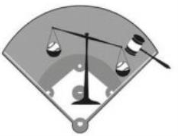In a precedential decision, the US Patent & Trademark Office (PTO) Trademark Trial & Appeal Board denied a motion for judgment based on either claim or issue preclusion, and in the alternative for a show cause order, in a challenger’s petition. Common Sense Press Inc. d/b/a Pocket Jacks Comics v. Ethan Van Sciver and Antonio J. Malpica, Cancellation No. 92075375, 2023 BL 171365 (TTAB May 19, 2023) (Wellington, Pologeorgis, English, ATJs).
Common Sense Press filed a petition to cancel the registration for the mark “Comics Gate” for comics. In its petition, Common Sense asserted claims of nonuse, abandonment and fraud. The Respondents denied the allegations in the petition and also raised unclean hands by petitioner as a defense.
Common Sense also requested reexamination of the “Comics Gate” mark, which the PTO Director instituted on May 9, 2022. The cancellation proceeding was suspended pending the outcome of the reexamination. The Respondents were instructed to submit evidence to establish use of their mark for comics as of the August 13, 2020, deadline for filing a statement of use, as required under Section 1(d) of the Lanham Act.
The Respondents’ Section 1(d) statement showed that the “Comics Gate” mark was used in connection with comics sales in interest commerce and that such comics were provided via interest trade channels during the relevant period. In view of the Respondents’ evidence, the PTO Director determined that use had been demonstrated for comics and terminated the reexamination.
With the Notice of Termination in hand, the Respondents requested that the Board enter judgment in their favor in the cancelation proceeding as to nonuse and abandonment based on issue preclusion or, in the alternative, issue a show cause order to Common Sense as to why judgment should not be entered against them.
The Board denied the Respondents’ request, reasoning that termination of a reexamination proceeding does not preclude future nonuse challenges. Nor does such a reexamination termination decision have preclusive effect on a petitioner seeking cancellation, even if the petitioner requested the terminated reexamination. Citing due process concerns, the Board explained that the termination of an ex parte reexamination proceeding in which the petitioner necessarily does not participate may not serve as a basis for preventing the petitioner from raising even identical challenges in another action. The Board further noted that while the applicable statute “contains explicit estoppel provisions that bar the filing of future expungement or reexamination proceedings as to the identical goods or services once a proceeding of the same kind has been instituted . . . neither the statute nor regulations set forth a limitation on any party’s ability to petition to cancel a registration just because it is or has been the subject of a reexamination or expungement proceeding.” Thus, the Board concluded there is no basis to issue a show-cause order to a litigant who never appeared in a prior action.
Practice Note: This case serves as a reminder of the metes and bounds of an ex parte reexamination or expungement proceeding. Although [...]
Continue Reading
read more


 Subscribe
Subscribe



